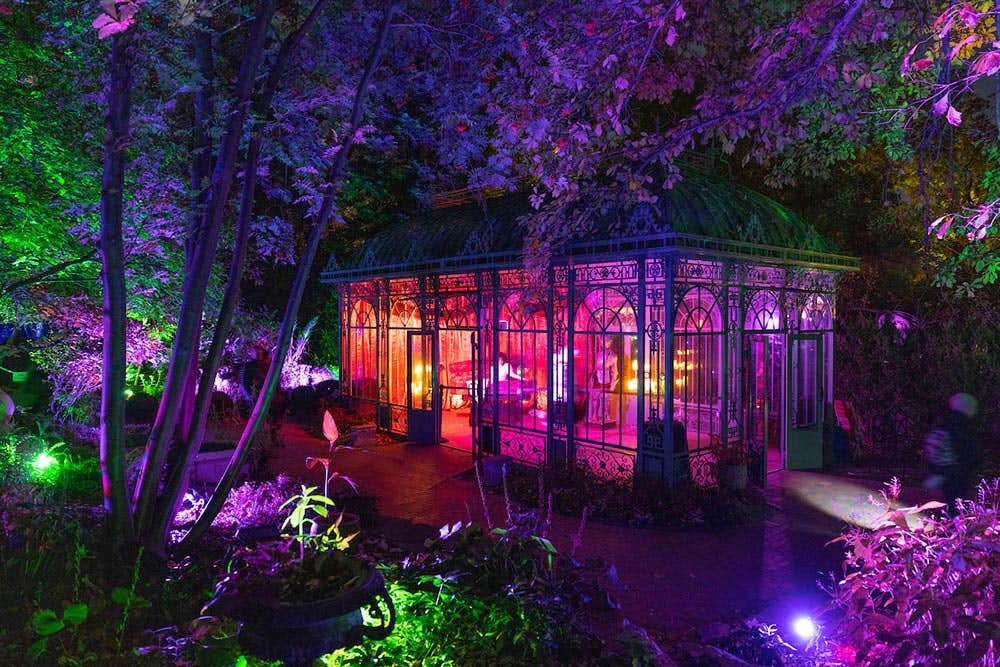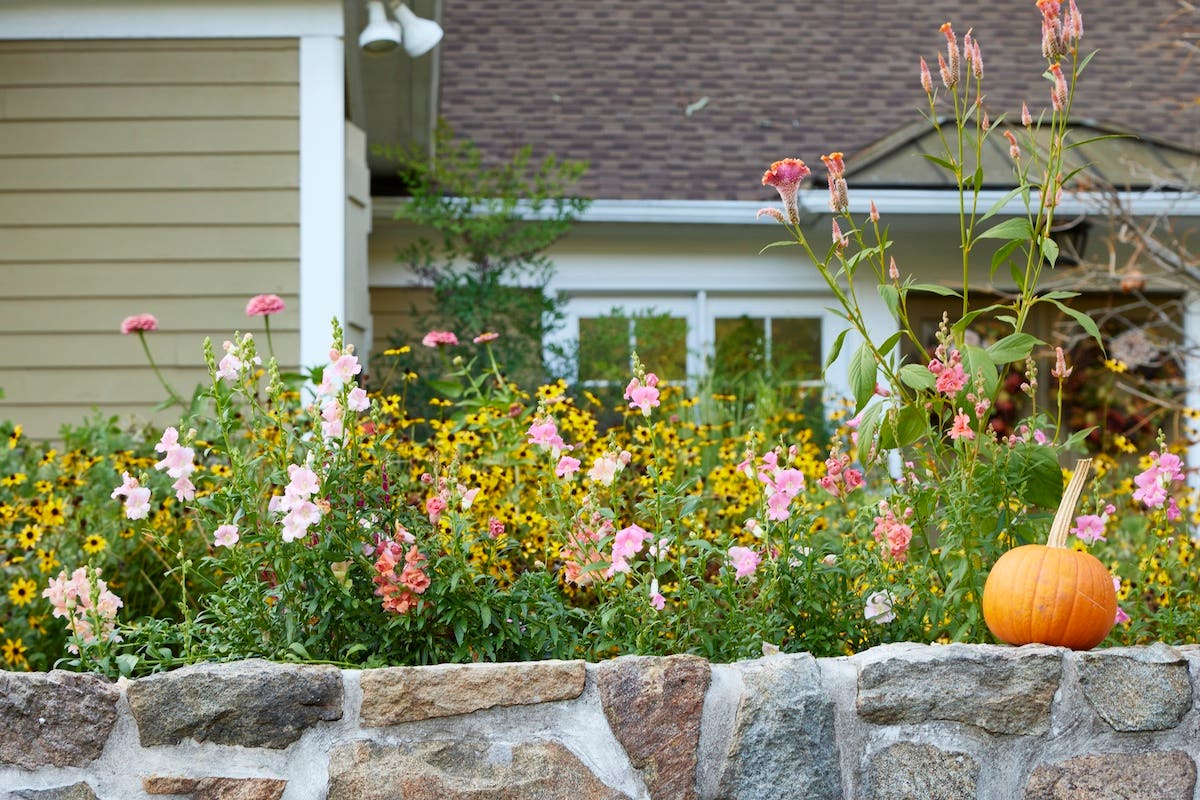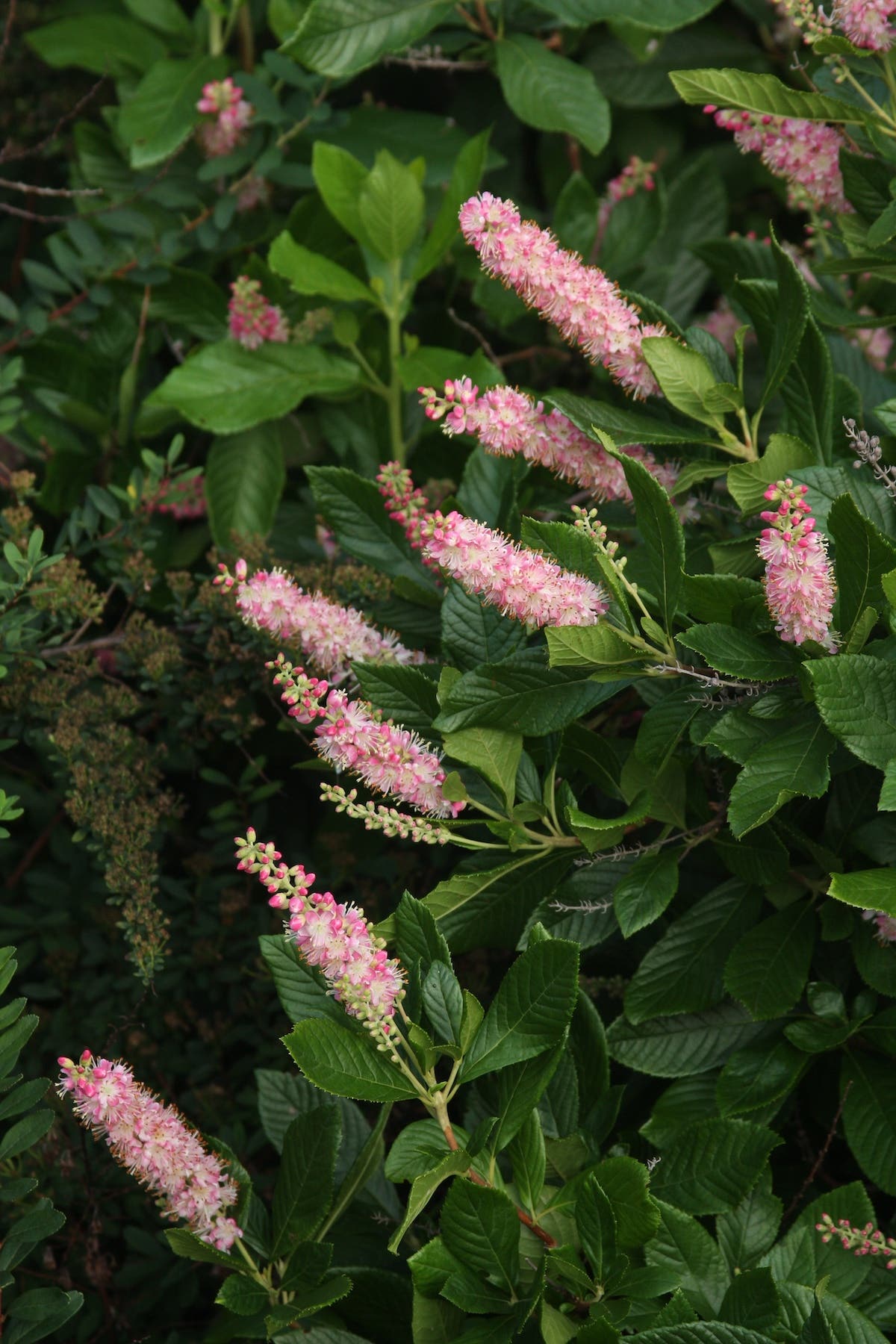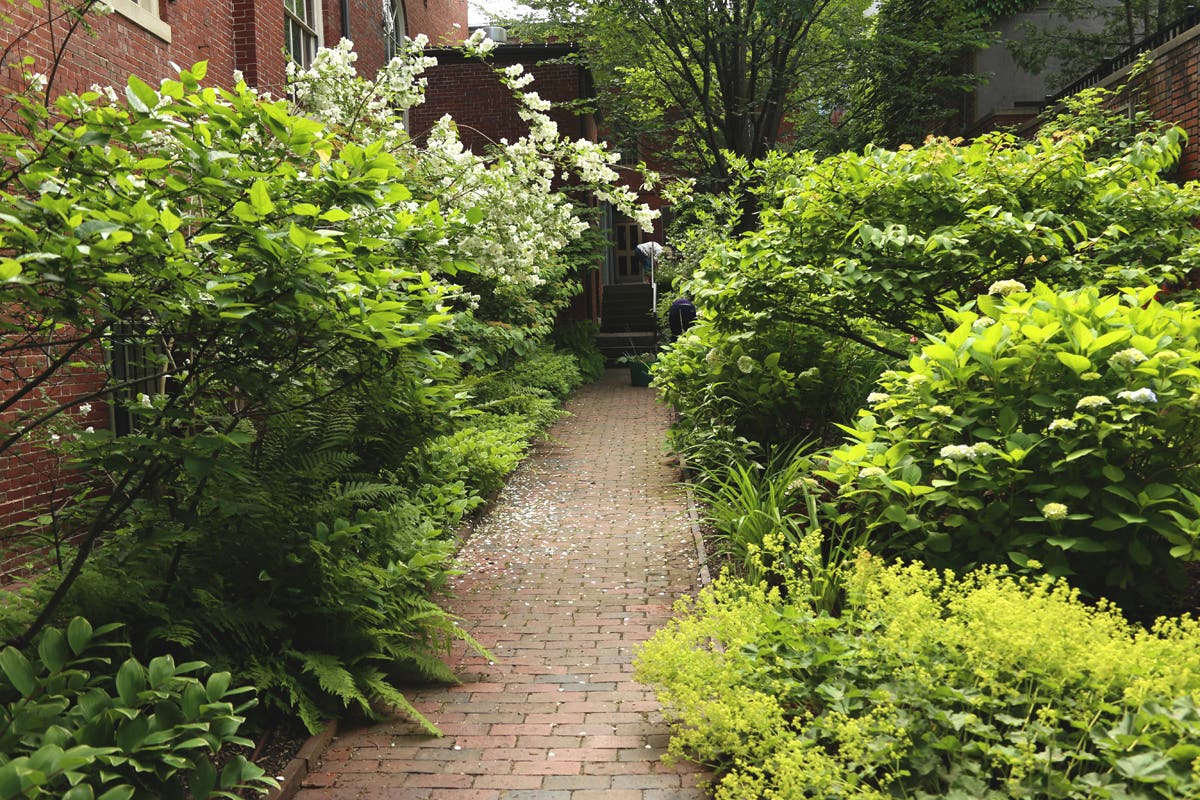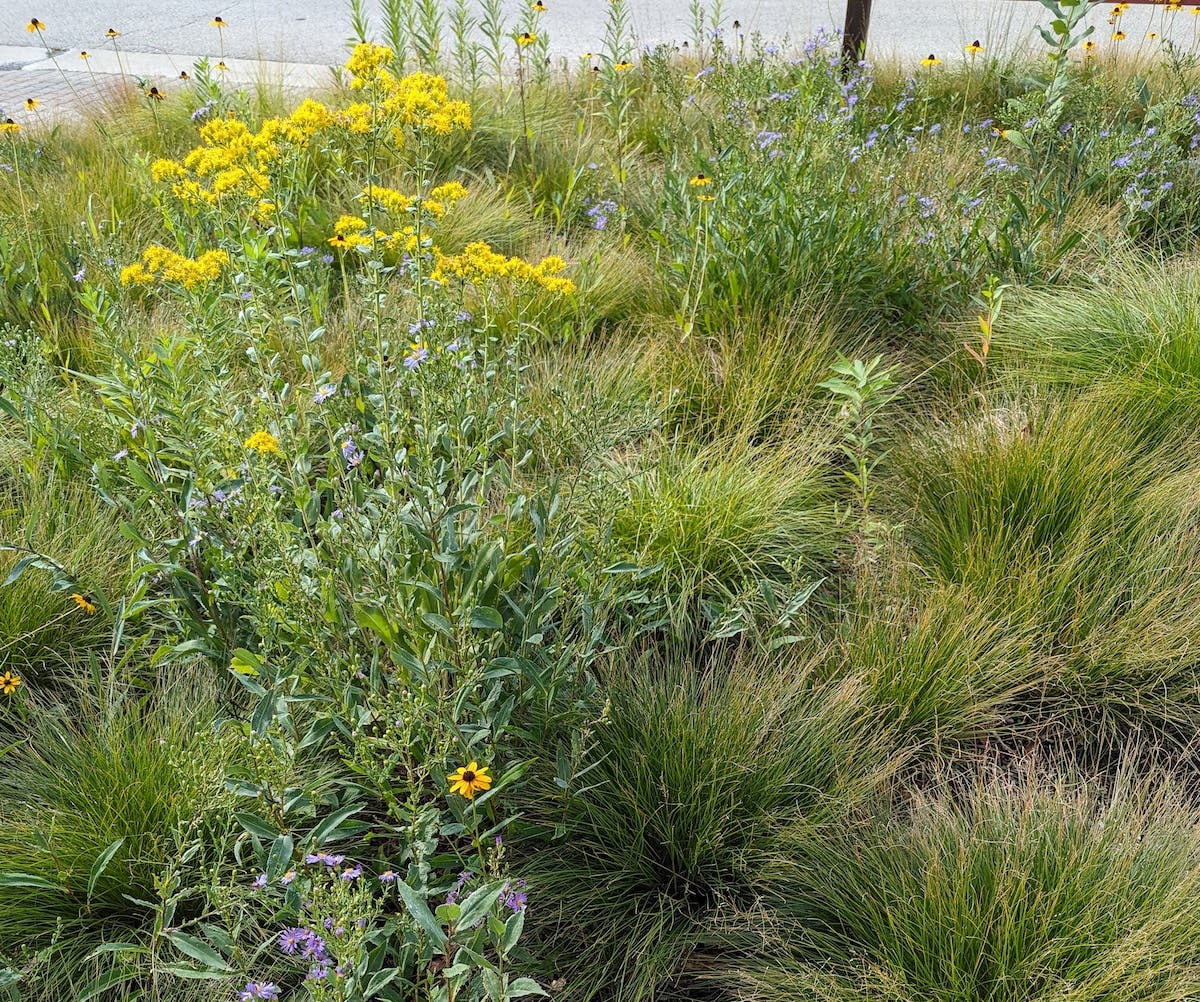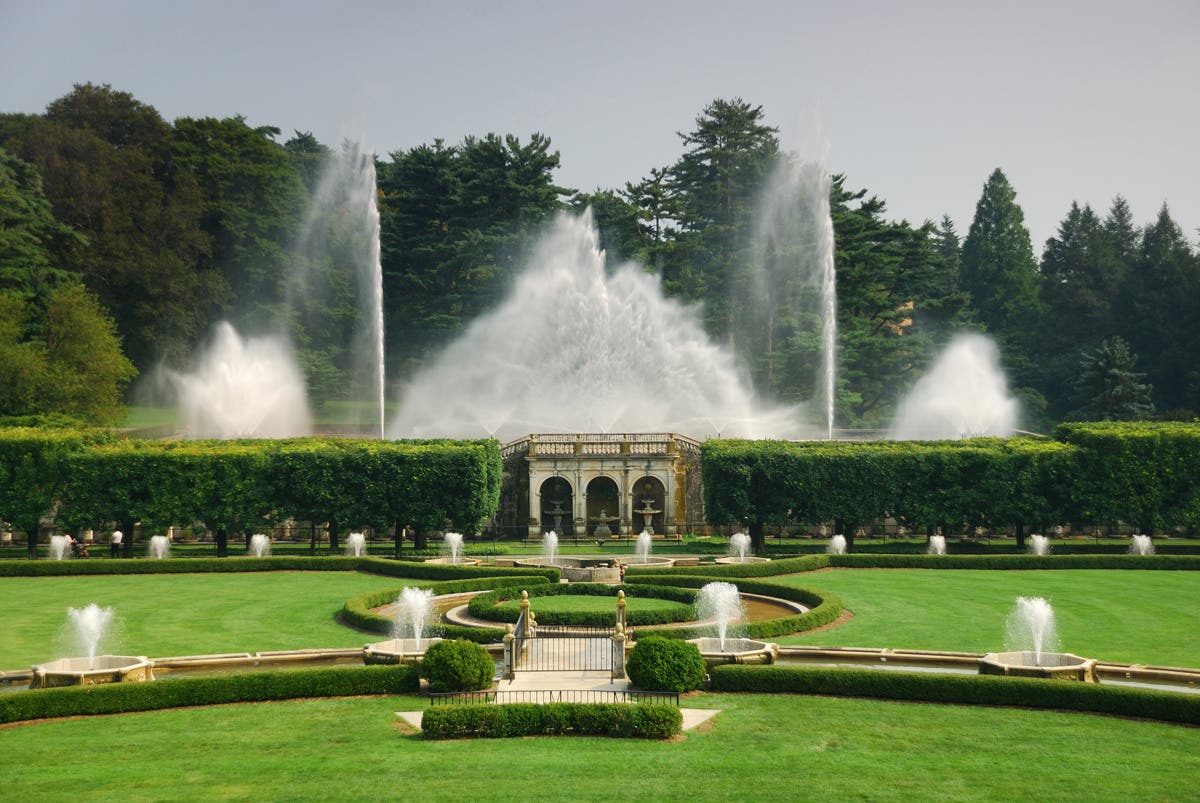Overused Plants and Some Worthy Alternatives
Try mapleleaf viburnum for something different!
There are at least 400,000 species of flowering plants in the world, and probably tens of thousands that could thrive where you live. Yet take a walk through almost any residential neighborhood and you might see the same handful of shrubs and perennials planted in yard after yard.
Every plant you choose represents an opportunity for more diversity in your garden. And biodiversity—increasing the number and range of species—has benefits that can extend beyond your own yard. Biodiverse landscapes are more resilient, with better odds of surviving threats from pests, diseases, invasive species or harsh weather. More diverse plantings provide increased habitat for wildlife, including a more diverse array of beneficial insects and other pollinators, reducing the need for pesticides. A more diverse landscape is more productive, resulting in cleaner air. And a broadened range of landscape choices offers you the chance to create something original and unique. You don’t need to plant the same things your neighbors do.
In fact, Paul Snyder, Operations Manager at Secrest Arboretum in Wooster, Ohio, suggests that homeowners should purposefully not plant what their neighbors have already planted.
“I advise people to look at what’s already growing in their neighborhood, and then not plant those things,” he says. “When we keep overusing the same short list of species in one area, we’re not benefitting the broader ecosystem.”
Backbone Shrubs
When a homeowner plants shrubbery, it usually stays around for at least 10 years, so shrubs are a good place to begin planning a more diverse landscape. Arborvitae, junipers and yews of all species have been widely used throughout the eastern United States, and for good reason. Hardy and able to thrive in a variety of conditions, any of them can form the backbone of an attractive home landscape. But there are many lesser-known species that are just as durable and capable.
Redbud hazel (Disanthus cercidifolius; USDA Zones 5–8) and mapleleaf viburnum (Viburnum acerifolium; Zones 4–8) are versatile, shade-tolerant deciduous shrubs with fiery fall color. Japanese plum yew (Cephalotaxus harringtonia; Zones 6–9), which is not a true yew, is a hardy evergreen shrub that tolerates heat and shade. In spots with acidic soil and enough sun, highbush blueberry (Vaccinium corymbosum; Zones 5–8) can form an attractive hedge and provide edible fruit as well.
Spiraea and Japanese barberry don’t have to be the go-to’ for eye-catching flowers and color. Summersweet (Clethra alnifolia; Zones 3–9), also called pepperbush, has dark green foliage and flowers that attract bees and hummingbirds. The pearlbushes (Exochorda; Zones 4–8) flower in white and heavily over a long season, and lilac daphne (Daphne genkwa; Zones 4–8) has striking purple flowers that are reminiscent of the true lilacs. Weigela florida (Zones 4–8), an old-fashioned shrub in the honeysuckle family, grabs attention in spring, when it blooms in shades of pink and purple. Breeding has resulted in cultivars that reliably rebloom or offer variegated foliage.
For autumn color, Asian spicebush (Lindera augustifolia, syn. L. glauca var. salicifolia; Zones 6–8) brings a brilliant display of reds and oranges in the fall and retains its leaves into the winter. Its American cousin, L. benzoin (Zones 4–9), offers golden fall foliage. Virginia sweetspire (Itea virginica) is another option for bright leaves at the growing season’s end.
Other shrubs that deserve wider use include Chinese buttonbrush (Adina rubella; Zones 6–9), with its glossy foliage and unusual spiky blooms, as well as the very similar but larger North American buttonbush (Cephalanthus occidentalis; Zones 5–9), and several species of Fothergilla (Zones 5–8), which provide three seasons of interest: early-spring flowers, blue-green summer foliage and a rich range of yellows, oranges and reds come fall.
Workhorse Perennials
Hostas circling the base of a tree is not the only planting option for shady areas, but you wouldn’t know it if you looked around my town. Over half the yards on my block contain hostas, but there are many viable alternatives. A range of ferns and sedges work well in shady areas. Ferns are among the world’s most ancient plants, with representatives from nearly every continent. There are bound to be lots of intriguing ferns that will grow wherever you live.
And there are hundreds of sedges (Carex) that are native to North America. These ornamental grasses can serve as border plantings, lawn substitutes in shady areas and living mulch or ground cover almost anywhere. Sedge flowers are often inconspicuous, but the foliage can be striking, with variegated colors. A good example is C. flacca ‘Blue Zinger’ (Zones 5–9), a slow-spreading ground cover with silver-blue foliage that can thrive in a variety of conditions.
Other ground covers worth exploring include Bouteloua gracilis ‘Blonde Ambition’ (Zones 4–9), an ornamental grass named for the color of its seed heads that are visible through the winter, and Allegheny spurge (Pachysandra procumbens; Zones 5–9), a pretty plant with toothed leaves and fragrant white flowers.
There are many interesting alternatives to commonplace perennial flowers and seeking them out can lengthen the overall garden’s bloom time. Hellebores have an early blooming season that can last over three months, right into late spring. Lenten rose (Helleborus orientalis; Zones 4–9) got its name from its late winter flowers that first display themselves during Lent. Plant breeders have been working with hellebores for decades, so there are a range of striking colors available. The same is true for the many hardy hibiscus (Hibiscus moscheutos; Zones 5–9 and H. coccineus; Zones 6–9), which attract lots of hummingbirds and butterflies when they bloom in late summer and autumn.
Local Flavor
Some of the plants mentioned above may already be familiar in your neighborhood. Happily, there are bound to be many more uncommon choices that could fit the same purpose.
“There are so many great plants we don’t see much right now, but we don’t want to see overused either,” observes Paul.
Linguistic cliches become cliches because they are so apt and useful, and the same is true with plants. Taking the time to find an alternative is always worth it. And discuss your quest for lesser-known plants wherever you make purchases. Paul feels confident that nurseries could, in just a couple years, have enough supply to catch up with demand for currently underused plants, if they began to receive more inquiries.
A Word for the West
The impetus for this article came from my observations around my Ohio neighborhood and discussions with Secrest Arboretum’s Paul Snyder. Our plant recommendations would have legs across much of the eastern United States and the Pacific Northwest. I talked to Taylor Lewis, Nursery Manager at the UC Davis Arboretum in California, who offered additional suggestions for gardeners working with the drier conditions in the West and Southwest:
Widespread plants to avoid: ornamental pears and plums (Prunus); heavenly bamboo (Nandina domestica); boxwood (Buxus); daylilies (Hemerocallis) and calla lilies (Zantedeschia); daisy bush (Euryops pectinatus); lily-of-the-nile (Agapanthus); society garlic (Tulbaghia violacea); southern sword fern (Nephrolepis cordifolia); alyssum; Shasta daisy (Leucanthemum xsuperbum).
Plants to try instead: California redbud (Cercis occidentalis; Zones 7–9); Oregon grape holly (Berberis aquifolium, syn. Mahonia aquifolium; Zones 5–9); rosemary (Salvia rosmarinus; Zones 8–10); coral yucca (Hesperaloe parviflora; Zones 5–10); golden emu bush (Eremophila maculata ‘Aurea’; Zones 9–11 ); red hot pokers (Kniphofia; Zones 6–9); sedges (Carex; Zones 3–9); western sword fern (Polystichum munitum; Zones 3–8); creeping thyme (Thymus serpyllum; Zones 4–8); lavender (Lavandula; Zones 5–10).
Mary Ann Lieser gardens in northeastern Ohio. This article first appeared in the May/June 2021 issue of Horticulture.
Image credits:
Mapleleaf viburnum by Aaron Carlson/CC BY-SA 2.0
Lilac daphne by Andrey Zharkikh/CC BY 2.0
Allegheny spurge by Salicyna/CC BY-SA 4.0
California redbud by Bri Weldon/CC BY 2.0


